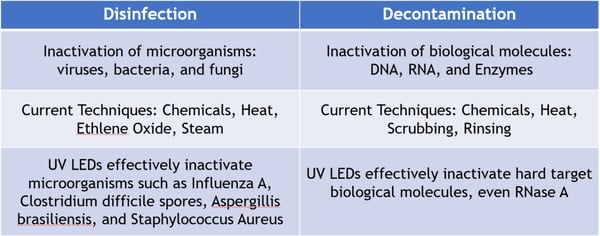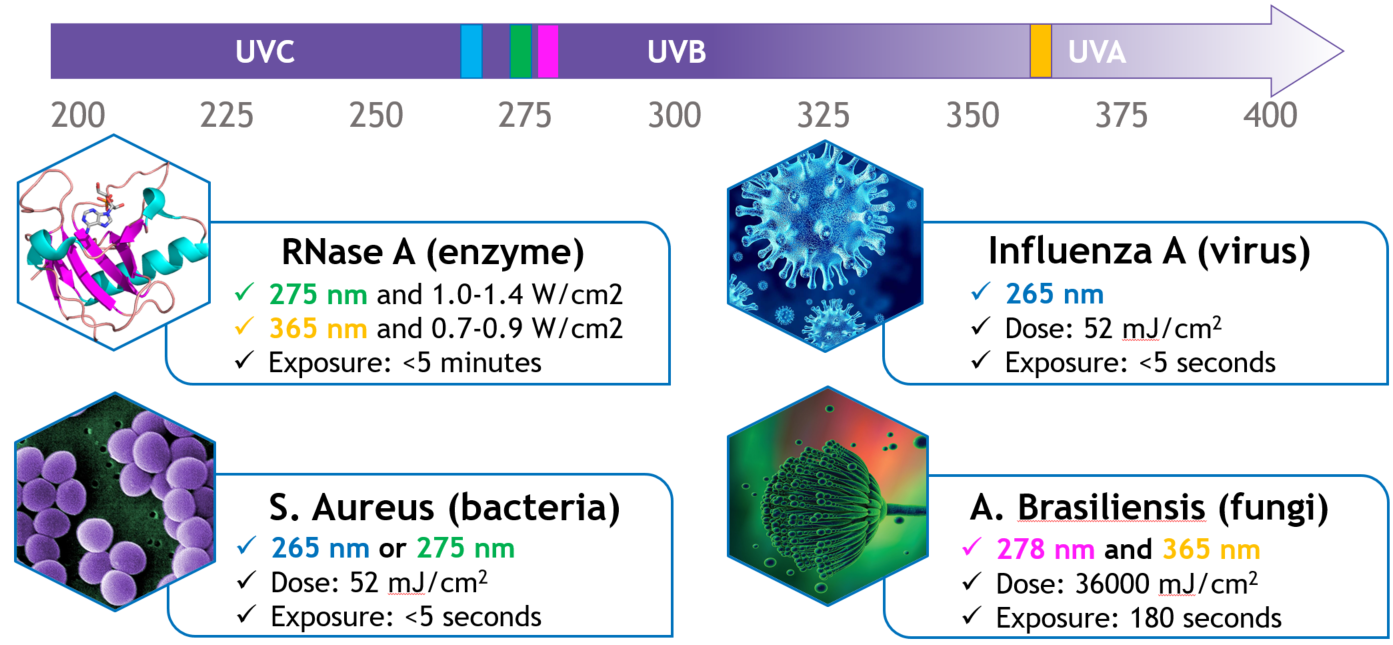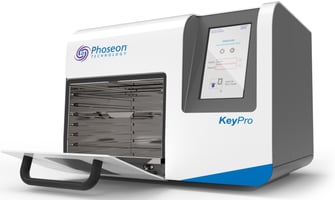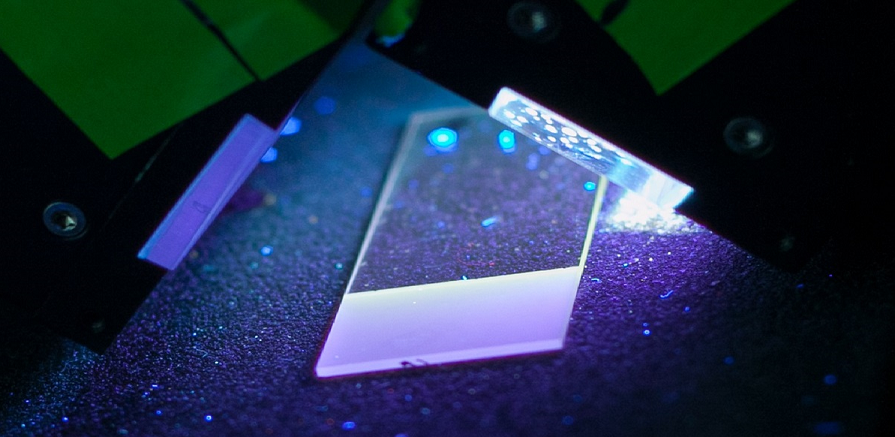UV LED radiation has proven to be an effective and innovative measure for disinfection and decontamination. Particular wavelengths affect different bonds within biological molecules. Therefore, determining what wavelengths are most effective against specific microorganisms and macro-molecules can greatly impact the capability of a lab to ensure accurate results.
What is the difference between disinfection and decontamination?

How to choose best wavelengths for disinfection?
We recommend a comparison model approach, starting with literature review: what have others done in similar situations and how successful were they? As you look for wavelengths that match your specific goals, make sure to keep in mind these characteristics about the species you are trying to eliminate:
- Size
- Structure (including similar amino acids and ionic behavior)
- Kingdom and Family
- Biochemical information such as reaction pockets or active sites
Wavelengths, dosage levels, and exposure time will all be impacted by the characteristics above. In addition, the object or organism that will be released from contaminants must be taken into consideration. For example, if mammalian cells are the ones that will be subject to disinfection, it’s important to make sure that the dosage and wavelength do not impact cellular functioning.
The best wavelengths for common and some of the most challenging contaminants
265 nm: it is known as an effective bactericide and has shown great results on disinfection against viruses like the Influenza A.
275 nm: this wavelength is thought to act on RNase A via an effect on the aromatic amino acids proximal to disulfide bonds. Also, it has shown great results against common bacteria (S. Aureus)
278 nm: proven effective against fungi like Aspergillis Brasiliensis and Clostridium Difficile (in synergy with 365 nm)
365 nm: targets the Lysine side chain and helps destabilize the reaction pocket of the enzyme RNase A. It’s also been effective in synergy with 275-278 nm for fungi inactivation.

RNase A is one of the most challenging contaminants in laboratories. The complete inactivation of this enzyme in a matter of minutes opens up new possibilities, making research faster and more accurate.
How can UV LED inactivate Sars-CoV-2?
As mentioned above, UV LED has proven effective against some of the most challenging contaminants. In addition, a study in Boston University inactivated SARS-CoV-2 using UV LED with a dose of 22 mJ/cm2. While more data is needed to affirm a concrete wavelength that would be effective against SARS-CoV-2, the information gathered to date can point us in the right direction. Many research efforts are focused on developing “information libraries”. Whether they contain active sites, mutations, or genomic information; having a place where this knowledge is accessible to scientists is imperative for progress. In the same way, developing a wavelength library can be very useful to research labs. So far, we know that novel SARS-CoV-2 and Influenza A (inactivated at 265nm) are both enveloped RNA viruses and may be susceptible to UV inactivation under similar conditions.

What is the best wavelength for disinfection?
The peak wavelength for disinfection is 265nm. For many decades mercury lamp systems have been available for disinfection utilizing one of the emission peaks of mercury, 254nm. This wavelength is close enough to the absorption peak to be effective. Phoseon systems utilize 275nm* LEDs. Similar to mercury lamps, this wavelength is also off the peak absorption; however, the high power systems available at 275 nm have enhanced performance that positions them well above any mercury lamp.
*Phoseon Technology offers the possibility to customize equipment based on the wavelength needed (available wavelengths)
What about the 220 nm range?
LEDs with wavelengths below 250 nm are still in very early research and have power in the nano-Watt range. With current technology the lowest commercially viable wavelength is 254nm. There have been studies surrounding the 200-222 nm wavelength range, which predict its ability to inactivate microbes while remaining safe for humans. This is due to the fact that light in the 200-222 nm range can only transverse small organisms such as bacteria or viruses, and is not able to affect larger biological samples like mammalian cells. Unfortunately, 220nm LEDs are not yet available. Our recommendation would be to use one of our 275nm high power systems and take the necessary precautions to avoid contact with the light.
There is yet not conclusive specific reports on the 222 nm mechanism of action. Most assume that it is due to DNA damage (dimer formation as is true for 254 nm). It is possible that there is some dimer formation. UVC 222 nm is also a wavelength specifically absorbed by peptide bonds. With sufficient irradiance and dose, protein damage at this bond could be possible. Most cells contain a dimer repair mechanism. Damaged proteins are generally recycled within cells. Viruses cannot directly repair themselves but must infect a host first in order to take advantage of any cellular repair mechanisms. Note here that 278 nm damage may also be repaired by recycling of the damaged protein (and making more). In both cases (222 nm and 278 nm) the objective is to damage so much that the repair starts failing.
UV Light Safety Precautions
Ultraviolet light has proven to be damaging to humans when in direct contact. Therefore, it is recommended to use protective measures such as wearing safety goggles, gloves, have restricted access to areas where UV light is in use, and make sure there is no skin exposure to the light source.
The best way to prevent UV light damage is to remove exposure altogether. Our KeyPro KP100 instrument for example has a built in safety switch on the door to turn off the light if the door is opened.



